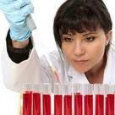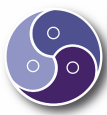Een artikel in ABC Gezondheid is is herkenbaar voor mensen die Traditionele Chinese Geneeswijzen kennen. Ijzertekort is vaak een symptoom van bloedleegte. De chong mai en de ren mai zijn verantwoordelijk voor de fysiologie van de menstruatie. Voor een normale menstruatie moet het bloed voldoende aanwezig zijn en adequaat stromen. Het eigenlijke bewegen van het bloed hangt af van de vrije stroom van de lever-qi en van de chong mai.
Dus een vrije stroom van de lever-qi en het leverbloed is essentieel voor een pijnvrije menstruatie.
Toch mooi dat in Westerse onderzoeken de Oosterse filosofie naar voor komt.
Hieronder het artikel:
Een voedingspatroon rijk aan ijzer helpt om symptomen van het premenstrueel syndroom (PMS) te voorkomen. Ongeveer 3.000 vrouwen werden tien jaar lang gevolgd: vrouwen met een hoge ijzerinname hadden 30 tot 40% minder kans op premenstruele ongemakken. Volgens Elizabeth Bertone-Johnson die betrokken was bij de studie, is het van belang dat vrouwen voldoende ijzer innemen. Ook zink kan PMS verminderen, dat bleek uit hetzelfde onderzoek.
De optimale ijzerinname zou iets meer dan 20 mg per dag moeten zijn, dus hoger dan de aanbevolen hoeveelheid ijzer, die op 18 mg per dag is vastgelegd. Elizabeth Bertone-Johnson waarschuwt ook voor teveel ijzer: vrouwen moeten vermijden om dagelijks meer dan 45 mg in te nemen.
Bronnen:
Chocano-Bedoya PO, Manson JE et al. Intake of Selected Minerals and Risk of Premenstrual Syndrome. Am J Epidemiol. 2013 Feb 26
Gepost in Acupunctuur, Chinese geneeskunde, Chinese geneeswijzen, Opleiding Chinese geneeskunde, Traditionele chinese geneeskunde ~ Geen Reactie
Acupunctuur verzacht spierpijn. De naalden stimuleren de aanmaak van de natuurlijke pijnstiller adenosine.
Volgens de traditionele Chinese geneeskunde zou je met behulp van acupunctuur de veertien energiebanen waardoor je levensenergie of chi stroomt, kunnen beïnvloeden. Hoewel de methode al 2.500 jaar bestaat, staat de westerse geneeskunde er nog steeds sceptisch tegenover en wordt het effect van de naaldentherapie in de regel toegeschreven aan het placebo-effect. Nieuw onderzoek, gepubliceerd in het gerespecteerde vakblad Nature Neuroscience, levert het bewijs dat bepaalde acupunctuurtoepassingen wel eens wetenschappelijk verantwoord zouden kunnen zijn. Bij muizen met een ontstoken pootje dan toch. Britse neuronwetenschappers gaven muizen een traditionele acupunctuurbehandeling, waarbij dunne naalden dertig minuten lang in de huid werden gebracht en om de vijf minuten gedraaid werden. De onderzoekers plaatsten de naalden op een specifiek punt in de knie – het Zusanlipunt – dat overeenkomt met een traditioneel acupunctuurpunt bij de mens.
Het resultaat was verbluffend: de pijnreactie bij de beestjes nam met twee derde af, en in het weefsel rond de naalden bleek de concentratie van adenosine – een natuurlijke pijnstiller – met een factor 24 te zijn vermenigvuldigd. Adenosine is een neurotransmitter die een belangrijke rol speelt in het onderdrukken van pijnsignalen.
Als dezelfde acupunctuurbehandeling uitgevoerd werd bij genetisch gemanipuleerde muizen die niet in staat waren om adenosine aan te maken, haalde dat niets uit. En bij niet-gemanipuleerde muizen die een middel kregen om de levensduur van adenosine te verlengen, hielden de pijnstillende effecten langer aan. Dat bewijst volgens de wetenschappers dat het wel degelijk de adenosine is die de pijn onderdrukt bij acupunctuur. Of de techniek ook bij mensen werkt, moet nog verder onderzocht worden.
BRON: University of Rochester, VK – EOS nr 7/8 juli/augustus 2010
Gepost in Acupunctuur, Chinese geneeskunde, Opleiding acupunctuur, Opleiding Chinese geneeskunde, Traditionele chinese geneeskunde ~ 1 Reactie
Electrical engineers in a medical research team discovered how acupuncture benefits sleep. They did it by measuring brain activity with EEG (electroencephalography) before, during and after an acupuncture treatment. Results were conclusive, acupuncture significantly increases slow wave activity of the brain relative to fast wave activity in both the frontal and central lobes. This phenomena is known to benefit the quality and duration of sleep.
EEG
The acupuncture point used in this study increases the delta band power density, a known sleep related brain wave band. In addition, acupuncture at this point downregulates alpha and beta band activity relative to delta band activity. The decreases in these bands also enhances sleep quality.
The researchers applied manual acupuncture to humans at acupoint ST36. It was found that this acupoint significantly increases the power ratio index of slow waves to fast waves following an acupuncture treatment. Stainless steel 0.2 mm diameter acupuncture needles were applied to the subjects. The needles were applied and retained for an initial two minutes followed by manual rotation of the needles applied for another two minutes. Measurements were taken throughout the brain of the delta (0 – 4 Hz), theta (4 – 8 Hz), alpha (8 – 13 Hz) and beta (13 – 30 Hz) bands. Notably, there were increases in the delta band power in five major brain areas during and after acupuncture.
The researchers note that “acupuncture at ST36 can induce obvious changes in different EEG rhythms in healthy subjects.” They also note that acupuncture modulations of brain activity resulting from acupuncture point stimulation show “that the brain plays a key role in acupuncture research.” They also suggest that “cortical electrical activities may be an important mechanism by which acupuncture exerts its complex multisystem effects.”
Gepost in Acupunctuur, Opleiding Chinese geneeskunde ~ Geen Reactie
A new acupuncture study finds that asthma patients emanate lower infrared radiation output from an important acupuncture point related to the health of the lungs. A study of 34 asthmatics and 34 healthy patients documented measurements of the infrared radiation emanating from acupuncture point LU9, a key lung-related acupuncture point located on the wrist.
The results demonstrate that asthmatics emanate a lower intensity of infrared radiation from LU9 across a wide wavelength spectrum compared with healthy patients.
About the Acupuncture Point
LU9 (Taiyuan, Supreme Abyss, Lung 9) is a shu-stream, earth and source point of the Lung channel. It is also the influential point of the vessels. Located at the wrist in the depression between the radial artery and the abductor pollicis longus tendon, LU9 is traditionally used to tonify the Lungs. It helps to descend Lung Qi, transform phlegm and benefit the vessels. Indications include coughing, wheezing, shortness of breath, dry throat and local pain of the wrist. From a Five Element perspective, LU9 is an earth point thereby making it a mother point. In the mother nourishes son relationship, LU9 is a tonic point. Combined with its designation as a source (yuan) point, this makes LU9 particularly well suited to strengthening the lungs.
Reference:
The infrared radiation spectrum of acupoint Taiyuan (LU 9) in asthma patients. ZHOU Yu, SHEN Xue-yong, WANG Li-zhen, WEI Jian-zi, CHENG Ke.
Faculty of Acupuncture-Moxibustion, Shanghai University of Traditional Chinese Medicine, Shanghai, China.
Faculty of Acupuncture-Moxibustion, Shanghai University of Traditional Chinese Medicine, Shanghai.
Shanghai Research Center for Acupuncture & Meridian, Shanghai, China. Journal of Traditional Chinese Medicine. 2012, 32(2).
Gepost in Acupunctuur ~ Geen Reactie
More than 45 million Americans (one in six) suffer from chronic headaches, 20 million of whom are women. Scientific research shows that acupuncture can be more effective than medication in reducing the severity and frequency of chronic headaches.
The pain that headache and migraine sufferers endure can impact every aspect of their lives. A widely accepted form of treatment for headaches, acupuncture can offer powerful relief without the side effects that prescription and over-the-counter drugs can cause.
Headaches and migraines, as well as their underlying causes have been treated successfully with acupuncture and Oriental medicine for thousands of years. Acupuncture and Oriental medicine can be used alone in the management and treatment of headaches, or as part of a comprehensive treatment program.
Oriental Medicine does not recognize migraines and chronic headaches as one particular syndrome. Instead, it aims to treat the specific symptoms that are unique to each individual using a variety of of techniques such as acupuncture, tui-na massage, and energetic exercises to restore imbalances found in the body. Therefore, your diagnosis and treatment will depend on a number of variables including:
Is the headache behind your eyes and temples, or is it located more on the top of your head?
When do your headaches occur (i.e. night, morning, after eating)?
Do you find that a cold compress or a darkened room can alleviate some of the pain?
Is the pain dull and throbbing, or sharp and piercing?
Your answers to these questions will help your practitioner create a treatment plan specifically for you. The basic foundation for Oriental medicine is that there is a life energy flowing through the body which is termed Qi (pronounced chee). This energy flows through the body on channels known as meridians that connect all of our major organs. According to Oriental medical theory, illness or pain arises when the cyclical flow of Qi in the meridians becomes unbalanced. Acupuncture stimulates specific points located on or near the surface of the skin to alter various biochemical and physiological conditions that cause aches and pains or illness.
The length, number and frequency of treatments will vary. Typical treatments last from five to 30 minutes, with the patient being treated one or two times a week. Some headaches, migraines and related symptoms are relieved after the first treatment, while more severe or chronic ailments often require multiple treatments.
Headaches Dramatically Reduced by Acupuncture
Since the early seventies, studies around the globe have suggested that acupuncture is an effective treatment for migraines and headaches. Researchers at Duke University Medical Center analyzed the results of more than 30 studies on acupuncture as a pain reliever for a variety of ailments, including chronic headaches. They found that acupuncture decreases pain with fewer side effects and can be less expensive than medication. Researchers found that using acupuncture as an alternative for pain relief also reduced the need for post-operative pain medications.
In a study published in the November 1999 issue of Cephalalgia, scientists evaluated the effectiveness of acupuncture in the treatment of migraines and recurrent headaches by systematically reviewing 22 randomized controlled trials. A total of 1,042 patients were examined. It was found that headache and migraine sufferers experienced significantly more relief from acupuncture than patients who were administered “sham” acupuncture.
A clinical observation, published in a 2002 edition of the Journal of Traditional Chinese Medicine, studied 50 patients presenting with various types of headaches who were treated with scalp acupuncture. The results of this study showed that 98 percent of patients treated with scalp acupuncture experienced no headaches or only occasional, mild headaches in the six months following care.
In a case study, published in the June 2003 Issue of Medical Acupuncture, doctors found that acupuncture resulted in the resolution or reduction in the frequency and severity of cluster headaches, and a decrease or discontinuation of pain medications. It was concluded that acupuncture can be used to provide sustained relief from cluster headaches and to stimulate the body’s natural production of adrenal cortisol to aid in discontinuing corticosteroids.
According to the July 2005 issue of the British Medical Journal, a randomized controlled trial in Germany found that acupuncture cut tension headache rates almost in half. Researchers divided 270 patients who reported similarly severe tension headaches into three groups for the study. Over the project’s eight-week period, one group received traditional acupuncture, one received only minimal acupuncture, and the third group received neither treatment. Those receiving the traditional acupuncture reported headache rates of nearly half that of those who received no treatments, suffering 7 fewer days of headaches. The minimal acupuncture group suffered 6.6 fewer days, and the non-acupuncture group suffered 1.5 fewer days. The improvements continued for months after the treatments were concluded, rising slightly as time went on.
Bron: Acufinder
Gepost in Acupunctuur ~ Geen Reactie








